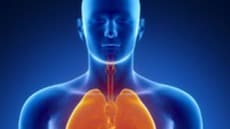Highlights
- Beginning in summer 2019, state health departments began working with CDC and the Food and Drug Administration to investigate an outbreak of e-cigarette, or vaping, product use-associated lung injury (EVALI).
- As cases began to be reported to state health departments, CDC worked with state partners to develop methods of searching emergency department data that allowed tracking of the EVALI outbreak in near real-time.
- CDC and partners will continue to use syndromic surveillance to monitor EVALI.

Public health problem
The use of e-cigarette, or vaping, products has increased substantially in recent years among youth and young adults.1 Beginning in summer 2019, state health departments began working with CDC and the Food and Drug Administration to investigate an outbreak of a new syndrome—e-cigarette, or vaping, product use-associated lung injury (EVALI).23 As public health officials worked to understand and control the outbreak, syndromic surveillance provided important clues.
Actions taken
As cases began to be reported to state health departments, CDC worked with state partners to develop methods of searching emergency department data that allowed tracking of the EVALI outbreak in near real-time. Syndromic data helped to pinpoint when an increase had occurred in emergency department visits for persons reporting use of e-cigarettes and symptoms consistent with EVALI, including shortness of breath and chest pain; this helped identify the beginning of the outbreak in June 2019.4 Syndromic surveillance also proved valuable in some public health jurisdictions for detecting cases of EVALI that might have otherwise been missed5 and providing evidence that the number of emergency department visits associated with e-cigarette, or vaping, products have declined since a peak in September 2019.
Outcome
Syndromic surveillance has important strengths for making emergency department data a valuable complement to traditional epidemiologic investigations. These strengths include timeliness, automated reporting, the ability to rapidly examine local and national trends, and the flexibility to change syndrome definitions without changing data collection. CDC and partners will continue to use syndromic surveillance to monitor EVALI.
- JAMA, November 5, 2019. jamanetwork.com/journals/jama/article-abstract/2755265
- MMWR, January 24, 2020: www.cdc.gov/mmwr/volumes/69/wr/mm6903e2.htm
- NEJM, September 6, 2019: www.nejm.org/doi/full/10.1056/NEJMoa1911614
- NEJM, September 6, 2019: www.nejm.org/doi/full/10.1056/NEJMoa1911614
- NSSP CoP meeting, IDHP presentation
